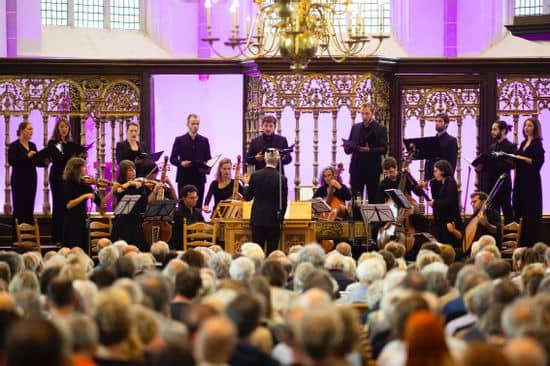The Masters of Notre-Dame
Since its foundation, the cathedral of Notre-Dame de Paris has brought together the greatest musicians of its time. As soon as the building was completed, it was within its walls that the first polyphonies were invented: this unprecedented art of superimposing several voices created a new harmony that had never been heard before. Singing was at the center of the services, which gave them a lustre that made them famous well beyond the capital of the kingdom.
Numerous singers, organists, composers, and choirmasters have been responsible for the great hours of music at Notre-Dame since the Middle Ages.
In the 17th century, although the Chapelle Royale was the focus of attention, mirroring a power that was concentrated on the court, Notre-Dame remained a considerable breeding ground for the musical arts. The Chapelle Royale drew the vast majority of its musicians from there. This program pays tribute to the great composers who were attached to it. In spite of the conservatism of the religious authorities, Paris Cathedral remained in the 17th century the epicenter of sacred music, not only because of the means at its disposal, but also because of its ambition to be the first sacred place in the kingdom. Its newly restored organ was a masterpiece of modernity and the greatest organists alternated there, creating a school famous throughout Europe, of which Bach was a great admirer. The most creative talents of their time succeeded one another as choirmasters and composers, and despite the very strict constraints imposed by the chapter, they offered the liturgy considerable splendor.
After his apprenticeship in the choir school of Notre-Dame de Paris, Pierre Robert was quickly spotted as one of the most inventive composers of his time: after ten years as Kapellmeister of the cathedral of Paris, it is naturally to him that the young Louis XIV offered, with Henry Dumont, the responsibility of taking care of the music of his chapel in the 1660s. The two of them invented the genre of the grand motet, which lasted until the revolution and became a model throughout Europe, as a symbol of French music. François Cosset, Jean Veillot and Jean-François Lalouette are also among the masters of Notre-Dame who made the reputation of French sacred music and whose music is of the first rank.
Like his predecessors, André Campra also had a typical career path for church musicians of his time: trained as a young singer at the Aix-en-Provence choir school, under the direction of Guillaume Poitevin, he was well versed in the art of ecclesiastical singing, church modes, and ceremonial. Prodigiously gifted, he quickly took up composition. If he quickly left the position of Chapel Master of Notre-Dame (the anecdotes on this subject give an idea of his incoercible attraction for the stage, apparently incompatible with any respectability if one believes the canons of the cathedral) to devote himself to the opera which will make his glory at the very end of the century, his sacred music constitutes a work of first plan. His Requiem is one of the most important works of the Great Century, and contrary to what a modern ear might expect from such a text, the music is of a solar intensity: the musician thus offers his particular reading of an ancestral text and a certain vision of death. The eternal light (lux perpetua) is at the heart of this southern work, resolutely positive, profound and radiant.
